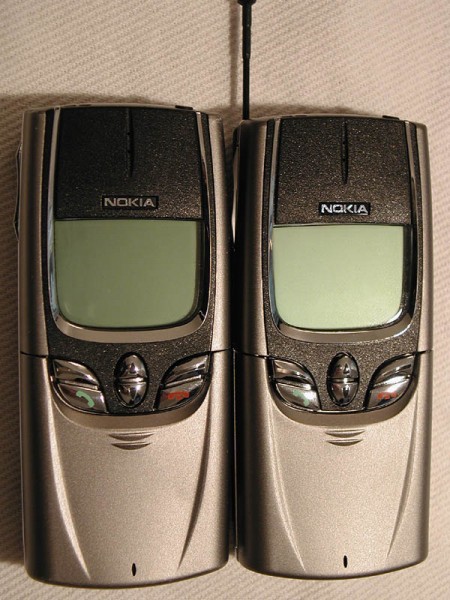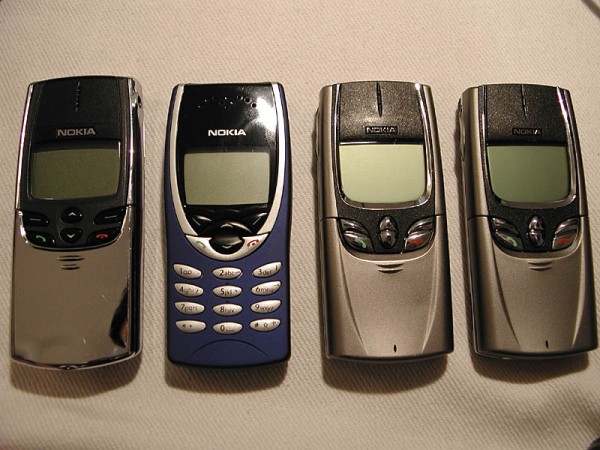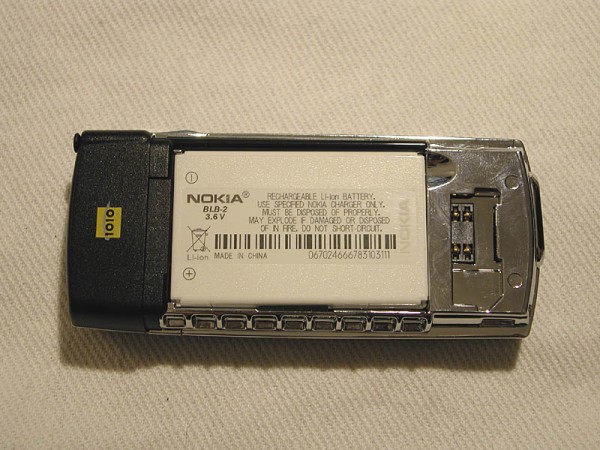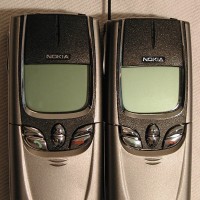Mobile Phones in Hong Kong have in recent years moved from just practicality (being able to communicate anytime) to pure fashion statement. We do love getting the newest mobile phones, to add to our Hello Kitty phone cords and Ultraman covers. With the advent of SIM cards (and falling prices), you can now buy a different phone every month and still use your same phone number. The networks used in the US primarily “program” mobile phones, and as a result, this option of switching phones regularly hasn’t proliferated as much as in Asia. However, GSM 1900 networks (run by Cingular, for example) are nearly everywhere so you might get to change phones as often as we do. However, our GSM networks tend to have many more options when it comes to phones.
Phones here in Asia come in a million shape and colors. I’ve not done a review of the many phones I’ve had because until now, they only worked everywhere in the world EXCEPT the US and Japan. So writing a review would leave a lot of people indifferent about the actual conclusion. That is until now. Dual band and even Motorola’s Tri-band phones are now able to roam from the rest of the world’s GSM network onto the US GSM network. No need to dull you with the details. As I was going to the US to hang out with danchan.com and candyboy Cliff, I thought I would buy a new phone that would work there as well.

HK & US Nokia 8890. Can you tell the difference?
The Nokia 8890 is essential the same Nokia that I’ve had for well over a year (the 8850). The only difference is the fact that the 8890 works in the US, and it has an antenna. (Take a look at the pictures, can you tell the difference?) I love Nokia phones, compared to any other company, Nokia has the best functions, the best menus, and are the best looking. Here is a picture of just some of the past Nokia phones that I have had (there are many more that I previously owned but many have since gone on to that great big mobile phone heaven while others have been sold or given away).
Form
The 8890 is a spectacular phone — it has been for a long time. It’s sleek “titanium” look has a wonderful matte finish that doesn’t scratch as easily as the older “chrome” Nokia (model number 8810 in Asia). The phone is really well constructed. I particularly like the sliding door that hides the phone buttons. As someone who’s had so many phones, sliding door phones or flip phones have a slight edge over other phones because they are better at preventing accidental pushes of the buttons, and hence accidental phone calls being dialed. Also, the 8890’s antenna seems a bit weird. The beauty of Nokia phones for some time has been its elimination of the antenna. We’ll get more into its function later.

Two 8890, 8810, 8850
My one complaint is that the form is a bit outdated. I guess since I’ve had it for more than a year (in the 8850 form), I had been hoping that they would re-invent the look or something. Nevertheless, it is still a really cool looking phone and it’s probably still the best looking one out there.
Function
The 8890 works just like the 8850 so all the functions are pretty similar to me. In fact, anyone who’s ever used a Nokia is pretty familiar with its functions. I can’t heap enough praise about how easy and simple Nokia menus are. I really like the ability to change “profiles” so that I can turn off the ringer while I’m at work, crank up the volume when I’m outside, or have one in-between like when I’m in a movie theatre (that’s a joke).
Cellular coverage in Hong Kong is pretty amazing, you can get reception practically everywhere. I didn’t realize this until I went to other countries and it was even more apparent in the US. I would just like to say that the Cingular pre-paid mobile service that I bought was absolutely dismal. At first, I thought ‘uh-oh, this phone sucks.’ Then I thought it was because LA was so spread out, but then when Cliff who was sitting right next to me got coverage, while I didn’t, using the exact same phone, I knew something was amiss. As for the antenna, it turned out to be completely useless. It did not help coverage/reception when it was raised, and since it’s a bit flimsy, I just left it down.
One thing I really like about the Nokia 8890 is the battery. Actually this applies to almost all the newer Nokias. I don’t have to keep buying new batteries for every phone I have, but I also can easily use someone else’s charger even if they don’t have the exact same phone (I can use danchan’s 8290 charger for example). Battery life is also superb. I remember the days when a mobile battery would barely last 12 hours. Today, it’s something like 2-3 days. Since I recharge nearly every night, and I use 2-3 different batteries, I have never had an issue with the battery.

Back of 8890
Factor
When all is said and done, can you find a better phone today? The answer is still probably no. I’ve bought a few others in the interim, but the 8890/8850 still wins on the overall package – presentation, function, reception, etc. The menu and functions are getting a bit outdated though and I like the way that some of the newer phones like Siemens have neat MP3 players (though I prefer separate devices for this purpose) or the way Ericsson already incorporates Bluetooth. At this very moment though, until yet another phone comes along, I think the Nokia 8890 is the ESSENTIAL mobile phone to have (unless you don’t use Cingular in which case you’re stuck with some of the other models).
